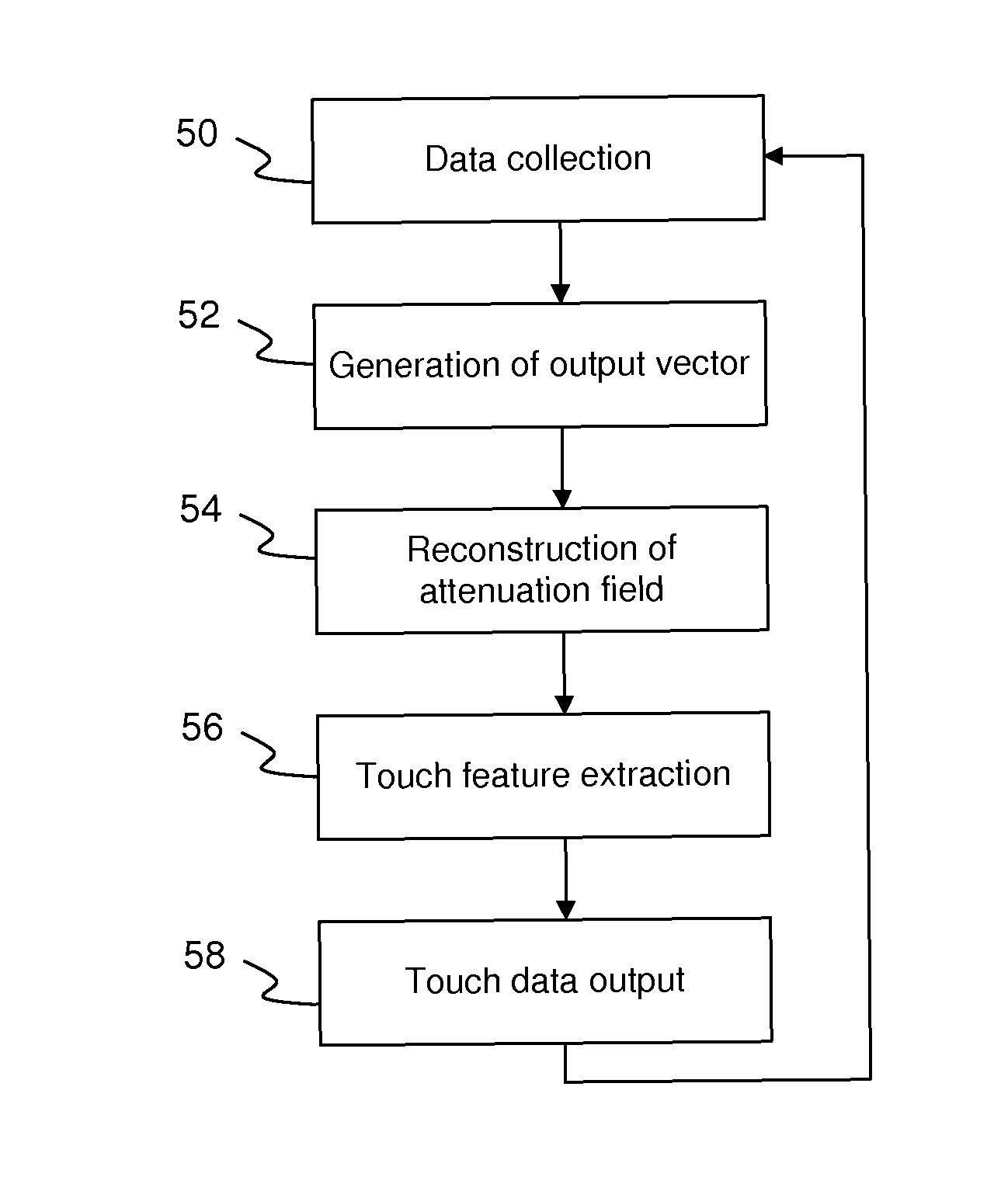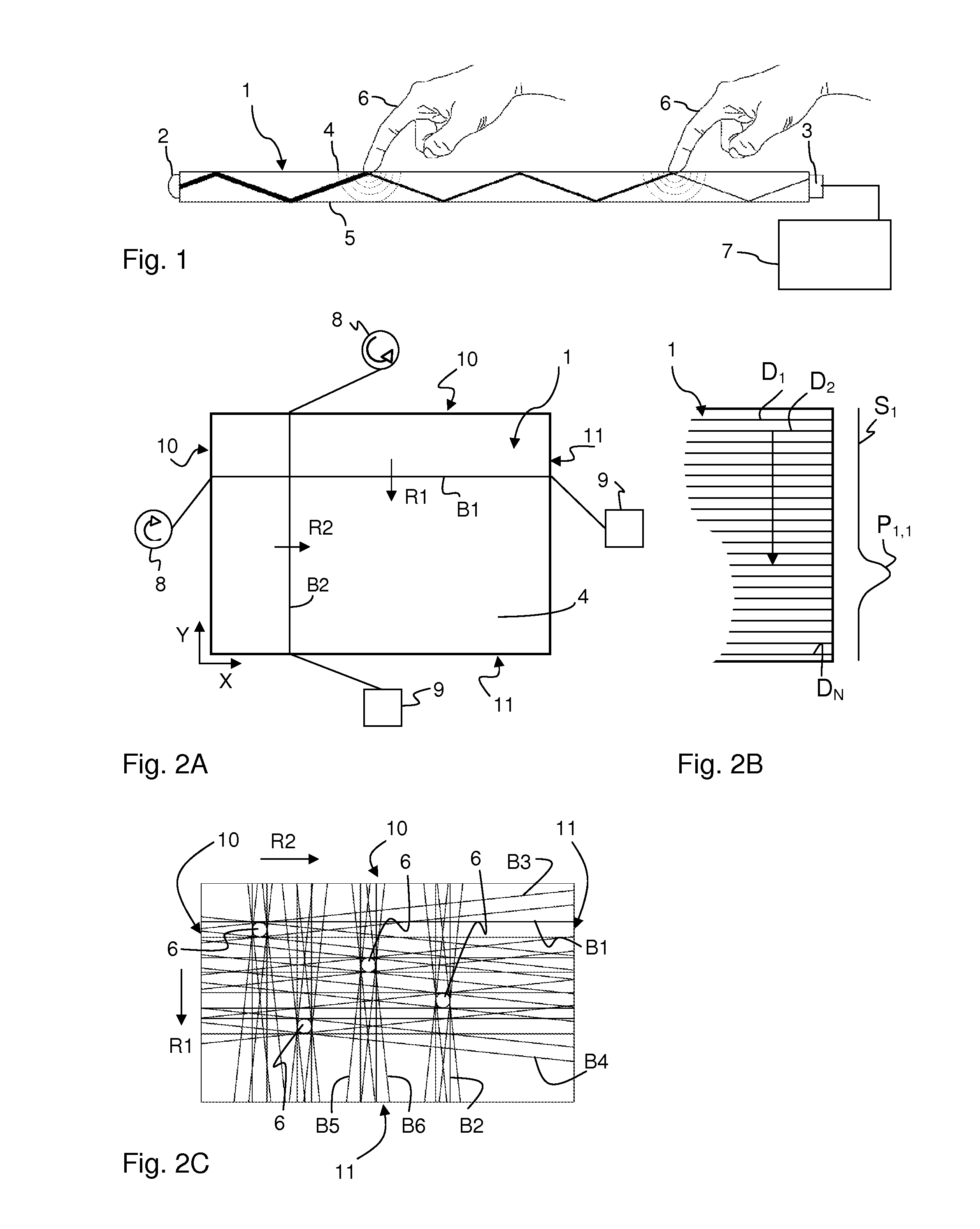Extracting touch data that represents one or more objects on a touch surface
a technology of touch data and objects, applied in the field of touch-sensitive panels, can solve the problems of large noise in the two-dimensional representation, and achieve the effect of sufficient precision
- Summary
- Abstract
- Description
- Claims
- Application Information
AI Technical Summary
Benefits of technology
Problems solved by technology
Method used
Image
Examples
Embodiment Construction
[0068]The present invention relates to techniques for extracting touch data for at least one object, and typically multiple objects, in contact with a touch surface of a touch-sensing apparatus. The description starts out by presenting the use of frustrated total internal reflection (FTIR) for touch determination, in relation to a number of exemplifying arrangements for illuminating the interior of a light transmissive panel. Then, a method for touch determination is described and certain steps of the method are discussed in further detail.
[0069]Throughout the description, the same reference numerals are used to identify corresponding elements.
[0070]The following notation is used for identifying certain signals, signal parameters / representations, and model parameters / representations.
[0071]Si: projection signal i
[0072]Pi,n: peak n in projection signal i
[0073]Dj: detection line j on touch surface
[0074]Tj: signal transmission on detection line j
[0075]d: output vector derived based on l...
PUM
 Login to View More
Login to View More Abstract
Description
Claims
Application Information
 Login to View More
Login to View More - R&D
- Intellectual Property
- Life Sciences
- Materials
- Tech Scout
- Unparalleled Data Quality
- Higher Quality Content
- 60% Fewer Hallucinations
Browse by: Latest US Patents, China's latest patents, Technical Efficacy Thesaurus, Application Domain, Technology Topic, Popular Technical Reports.
© 2025 PatSnap. All rights reserved.Legal|Privacy policy|Modern Slavery Act Transparency Statement|Sitemap|About US| Contact US: help@patsnap.com



